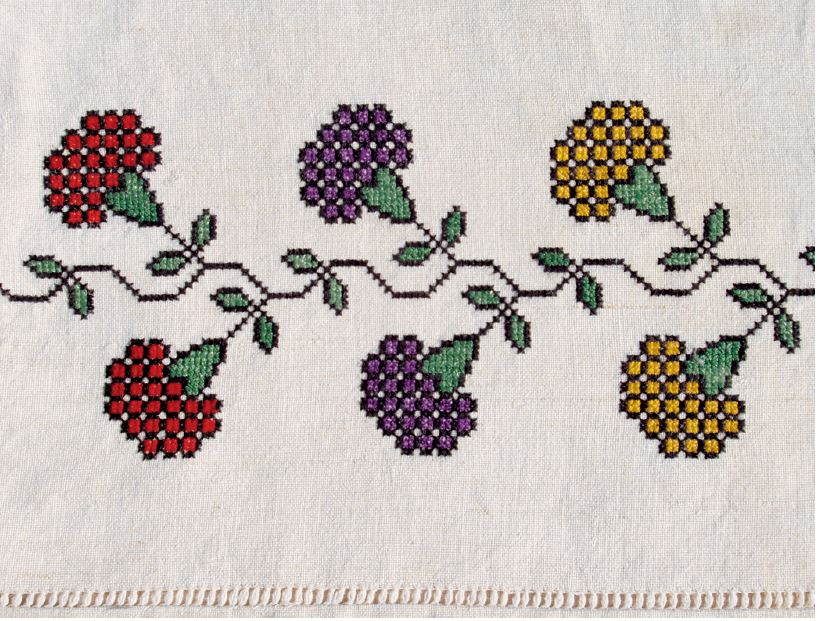Part two: Slovakia
Juraj Zajonc
The variability of patterns and embroidery motifs in Slovakia is a result of connections in the domestic environment and cultural influences from other countries. Pattern books, as everywhere in Europe, played an important role in this process. Elements of the culture of the Italian Renaissance had already penetrated Hungary by the fifteenth century through the leading levels of society. Multicoloured plants, leaves and fruits (tulips, narcissi, carnations, less commonly lilies or irises, grapes, pomegranates, palm or Bears breech leaves), a variety of animals (e.g. lion, deer, peacock, billy goat, pigeon and others) as well as objects (such as hearts or stars) can be found in the pattern books. Craft masters – embroiders used to work following the patterns. These patterns were also known in Closter workshops. Links through pattern books between Slovakia and the Europe of that time are confirmed in pattern books preserved in museums. Like other European countries, the publication of the Encyclopaedia of Female Handworks by Therese de Dillmont was widespread in Slovakia. An important source of embroidery patterns were additions to female fashion magazines of the nineteenth century. The embroidery was enriched by the wide variety of regional and local types in the village environment of nineteenth century Slovakia. Its flourishing was influenced by the improved position of the village inhabitants and with a reduced interest in hand embroidery in the circles of the bourgeois and noblemen. Folk embroidery also contains many elements from pattern books from various eras. Village women came into contact with embroidery from pattern books in churches, in noblemen homes, as well as in contact with craftsmen. Folk embroidery was enriched in western Slovakia by the activities of the Izabella Group (1895), which employed village embroiders decorating linen, clothes and church costumes. In contrast to the higher levels of society which was closely connected to fashion, the use of pattern motifs in the village environment did not undergo the same principles as fashion. Therefore, many of the motifs can still be found in folk embroidery. At the turn of the twentieth century, Drahotína Križko-Kardossová was the personality behind a national movement interested in embroidery. She organized the production and sale of embroidery and laces in order to improve the living standards of the inhabitants. In the village environment she collected motifs, which were the basis for the creation of the pattern books. In addition to printed pattern books, patterns spread by means of embroidered pattern books. Their creation and use were often connected with the family or school.
